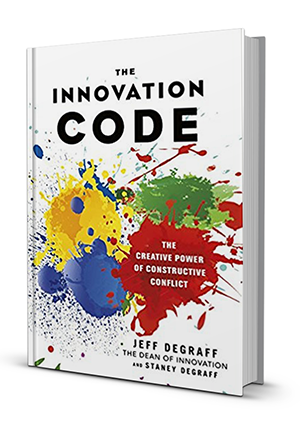A journalist asked me, “Is the Euro going to go up or down?”
“Up, of course,” I said. That got his attention.
“Why? “
“Because it’s down now. That’s what currencies do. They go up and down.”
“When?” he wanted to know. “When is it going to go up?”
All I could do was smile. “If I knew that, I wouldn’t be telling you. I’d be off buying Euros.”
We would all like to know right away which of our ideas for how to make our lives better is going to succeed and which isn’t, so we can be perfectly certain of success. That’s why people buy so many of those checklist-type books with titles like Seven Steps to Get Rich Quick. We’d all love to find a foolproof checklist that will succeed everywhere, for everyone, forever – but as we find out sooner or later, there’s no way to get that kind of perfect information. Just watch any old science fiction movie. It may be good or bad, but with hindsight we always find that the filmmaker never gets the future right. If you watch “2001,” you’ll see that the story assumed that by 2001 there would be two bases on the moon, one run by the United States and one by the Soviet Union. At the same time, when a character in the movie makes a video phone call, he has to sit inside a phone booth and pay by the minute – the creators were able to imagine an American moon base but not a free Internet phone call on a handheld device. And though it’s supposed to be the future, everyone is dressed in closely tailored 1960s clothes, because that’s what was in style when the movie was made. There is no data on the fashion future, either.
Even graduates of business school fall into the trap of thinking they can know what the future will bring. MBAs typically try to understand the future by doing more research on the past, so they can document and repeat what worked before. But as innovators know, the game keeps changing. What worked before won’t necessarily work again. There is no certainty. If you don’t believe me, go read the checklist-style business books on innovation that were popular five years ago. It’s the reading equivalent of slowing down on the highway to get a look at a car wreck. Innovative business practices that were heralded as the next new thing are strewn to the side of the road.
Take a business practice from that era called Total Quality Management. It was the innovative management approach developed back when the Japanese were suddenly making cars of much higher quality than we were making in America. Our cars were full of defects, and lots of Americans started to buy Japanese. To become competitive again, the Total Quality Management approach said that everyone involved in making a product like a car, including people outside the company such as suppliers and customers, had to participate in checking and maintaining quality. It was a very good idea about how companies could make fewer mistakes, and by about the year 2000 American quality ratings were indistinguishable from those of Asian companies. TQM worked.
The trouble was, too many business people forgot that TQM was an innovation developed to solve a specific problem at a specific time. They forgot that their fabulous data about TQM only applied to the past, and that there was no data from the future. TQM came to be seen as a cure-all, a required “improvement” for any company. But eliminating errors is not the only thing companies have to do well. And in fact, while American car companies were focusing increasingly on reducing the number of mistakes they made, Japanese and Korean companies shifted focus. They started to ask: how could we build exciting new luxury cars? How could we break into what has always been an American and European market? They had shifted from reducing errors to expanding into new markets, and the fact that American companies were hyper-focused on reducing manufacturing errors meant the Asian companies had plenty of time and room to innovate – and pull ahead of American manufacturers again.
All those American companies that jumped on the TQM bandwagon were making the same basic mistake: they thought that past success was a guarantee of future success. We all do this at times. Every year, it seems, as college admissions news comes in, I hear about some family shocked that their child hasn’t gotten into any college except a safety school. They say something like: “How could that happen to Billy? He was such a smart little boy. Why, when he was four years old….” They’re still relying on the mental picture they have of him from years ago – and ignoring more recent potential pictures, like the one of his school losing its standards, or the one of smart Billy, bored in his failing school, cutting classes and getting into trouble.
If past performance can’t predict the future, and you can’t rely on the methods that worked yesterday to work again for you tomorrow, then what can you do? How do you meet the uncertainty of the future – the only place where you can grow? By taking the mental stance of the successful creativizer. Neither hiding from change nor lost in endless preparation and research. Uncertain – but not upset to be uncertain. Because life can’t be fully plotted in advance, only understood in hindsight, the innovator goes forward uncertain but curious, interested, and responsive to new data as it comes in, and comes in again tomorrow.
Discover the power of constructive conflict and how it can help foster innovation. By reading The Innovation Code, you will learn how to harness tension and transform it into positive energy to successfully implement your innovation projects.


